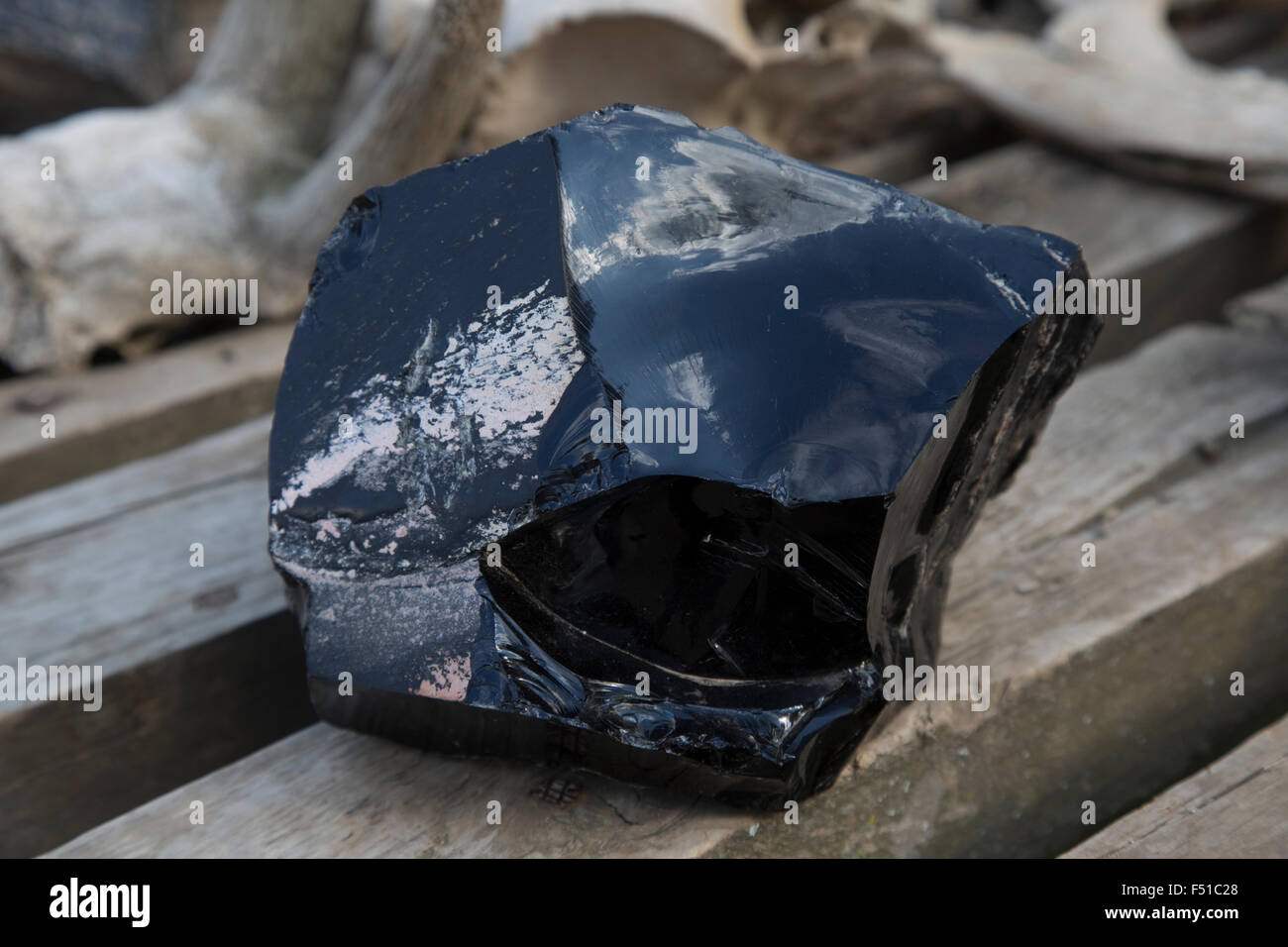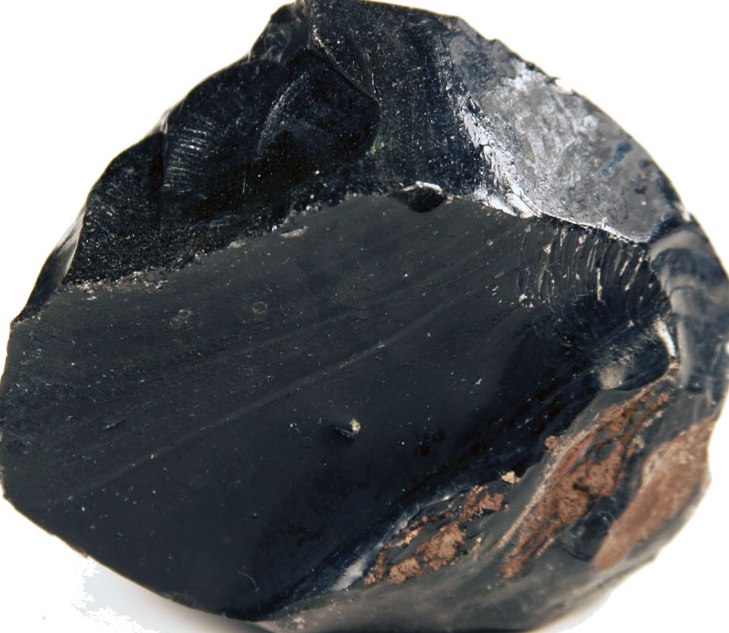
In Ubaid in the 5th millennium BC, blades were manufactured from obsidian mined in today's Turkey. Modern archaeologists have developed a relative dating system, obsidian hydration dating, to calculate the age of obsidian artifacts. It was also polished to create early mirrors. Like all glass and some other types of naturally occurring rocks, obsidian breaks with a characteristic conchoidal fracture. Obsidian was valued in Stone Age cultures because, like flint, it could be fractured to produce sharp blades or arrowheads. Obsidian has a long history as it has been dated back to the Stone Age, when it was used for tool making and as an ornamental stone. Obsidian is not made of mineral crystals therefore, it is not a true rock. Pliny's Natural History features volcanic glass called "Obsidianus", so named from its resemblance to a stone found in Ethiopia by one Obsius. Tektites were once thought by many to be obsidian produced by lunar volcanic eruptions, though few scientists now adhere to this hypothesis. Obsidian has low water content when fresh, typically less than 1% water by weight, but becomes progressively hydrated when exposed to groundwater, forming perlite. This breakdown of obsidian is accelerated by the presence of water.

Because obsidian is metastable at the Earth's surface (over time the glass becomes fine-grained mineral crystals), no obsidian has been found that is older than Cretaceous age.

Obsidian consists mainly of SiO2 (silicon dioxide), usually 70% or more.Ĭrystalline rocks with obsidian's composition include granite and rhyolite.

Though obsidian is usually dark in color similar to mafic rocks such as basalt, obsidian's composition is extremely felsic. It is sometimes classified as a mineraloid. Obsidian is mineral-like, but not a true mineral because as a glass it is not crystalline in addition, its composition is too complex to comprise a single mineral. Smoky quartz usually has a splotchy or zoned distribution to its color while Obsidian's color is more uniformly distributed. The piezoelectric and optical properties in quartz are thus absent in obsidian. However, many properties dependant on a crystal structure are altered or absent in obsidian because it lacks any crystal structure of its own. Often confused with smoky quartz, obsidian has similar properties to quartz because of a similar chemistry. Small nuggets of obsidian that have been naturally rounded and smoothed by wind and water are called Apache Tears. Inclusions of small, white, radially clustered crystals of cristobalite in the black glass produce a blotchy or snowflake pattern producing Snowflake Obsidian. These bubbles can produce interesting effects such as a golden sheen, known as Sheen Obsidian or a rainbow sheen called Rainbow Obsidian. Obsidian can contain small bubbles of air that are aligned along layers created as the molten rock was flowing just before being cooled.

Iron and magnesium give the obsidian a dark green to black color. This process produces a glassy texture in the resulting rock. Often the lava pours into a lake or ocean and is cooled quickly. Obsidian is the result of volcanic lava coming in contact with water. Uses: As a semiprecious stone and ornamental stone for carvings.ĬLICK HERE To Purchase Kidz Rocks Obsidian Products. Chemistry: SiO2 Mostly silicon dioxide with large amounts of impurities.


 0 kommentar(er)
0 kommentar(er)
